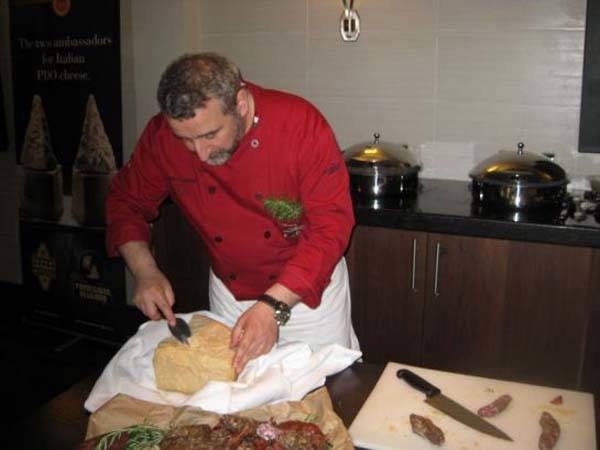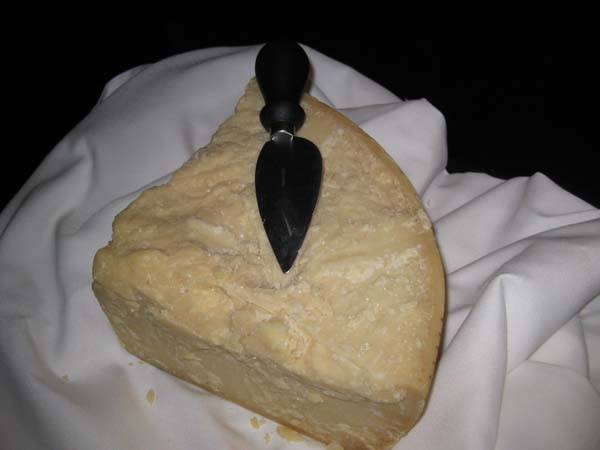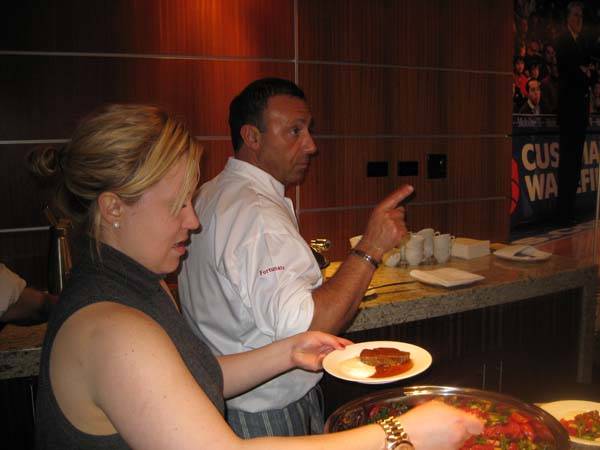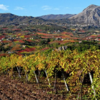Parmigiano Reggiano and Grana Padano Come Together for the First Time
I was so surprised, I had to read the invitation twice. I was invited to Madison Square Garden by both the Grana Padano and Parmigiano Reggiano Consortia. Were these two leading Italian cheese going to fight it out? No, the Consortia for both announced the first –ever partnership to advance understanding and usage of their two authentic Italian cheeses. Buonitalia, the Roman-based government agency responsible for promoting and safeguarding Italian agriculture, announced a new integrated marketing partnership with Madison Square Garden centered on the Knicks. Great cheese and seeing the NY Knicks in action--I had to go! The invitation also said that Parmigiano Reggiano and Grana Padano, united by their EU Protection Designation of Origin (PDO) status, share a common cause: to promote quality cheeses against imitation and “Italian sounding” products.
When I arrived at the Garden, I found that the cheeses were in two separate rooms. In the Parmigiano room, the food was prepared by Chef Cesare Casella of Salumeria Rosi Parmacotto. There were two rounds of Parmigiano, one supplied by Cesare and the other by the Consorita. Cesare imports this cheese and you can buy it in his shop next to the restaurant. It was 36 months old and had a very creamy crystalline texture. It was very good.
The second wheel was a summer cheese made when the cows were eating fresh grass. It was not as creamy and had an herbal quality and a great crystalline texture. I was told by Nancy Radke, the Parmigiano Reggiano representative, that the Italians prefer the summer cheese. The rest of the year, the cows eat hay, etc. and Italians feel that the cheese is not as good. I believe that the Italians keep the summer cheese for themselves and send us the cheese from the rest of the year. In tasting both a number of times, I gave the edge to the summer cheese, though I would happily eat the other cheese as well. Cesare prepared dishes using the Parmigiano including a Tuscan bean salad, Parmigiano puffs accompanied by a selection of salumi.
Lou Di Palo of Di Palo’s Fine Foods in Little Italy, an expert on Italian cheeses, said a few words about all of the cheeses that were served.
Parmigiano Reggiano is a hard aged cow’s milk cheese and can only be produced within the provinces of Parma, Reggio Emilia, and Modena in their entirety, in the province of Bologna to the west of the Reno River and in the province of Mantua to the east of the Po River. It is produced from a mix of whole and skimmed cows’ milk through a handmade process free of additives and preservatives. After 12 months it is inspected and stamped with the Consortium’s certification mark. It is aged for a minimum of 12 months more.
Parmigiano Reggiano is a cheese that can go with many different types of wine from marsala to lambrusco and almost everything in between. In fact in a restaurant outside of Parma I had the perfect dessert: a fresh pear, walnuts, Pamigiano Reggiano and a glass of lambrusco.
In the Grana room, Chef Fortunato Nicotra of Felidia Restaurant prepared
Grano Padano frico with an apple celery salad, Grana Padano “Pope” raviolini in Grano Padano broth, and braised flat iron cut beef with Grana Padano fonduta.
There was a wheel of Grana Padano in the room waiting to be eaten. Slightly less crystalline than the Parmigiano, it was full of flavor and makes an excellent cheese for eating and cooking.
Grana Padano is the best selling PDO cheese in the world. It is produced in five different Italian Regions: Piedmont, Lombardy, Emilia-Romagna (Piacenza province),
the Veneto, and Trentino – Alto Adige (Trento province). The cheese was first produced by Cistercian Monks in northern Italy’s Po River Valley nearly 1000 years ago. It is made from local raw, partially skimmed milk and the whole process takes about one year and follows the traditional methods followed by the Cistercian Monks. The cheese is then fire branded with a four leaf clover stamp confirming the origin with the province’s code and the producer’s registration and the name “Grana Padano” on the crust of the wheel. Grana Padano has a characteristic grainy consistency (“grana” means grainy in Italian) that increases as the cheese ages. “Padano” refers to the Po River Valley. It takes about 135 gallons of milk to produce one wheel each weighing about 70-75 pounds. Grana Padano can be eaten by itself and enjoyed with a glass of Prosecco.
I was here with Louis Coluccio of Coluccio & Sons in Brooklyn. Although our invitations had said that we could watch the Knicks game from the luxury suites, we were disappointed, because they ran out of tickets. We consoled ourselves with the cheese and a glass of prosecco. I heard later that night that the Knicks had won!










































i-Italy
Facebook
Google+
This work may not be reproduced, in whole or in part, without prior written permission.
Questo lavoro non può essere riprodotto, in tutto o in parte, senza permesso scritto.